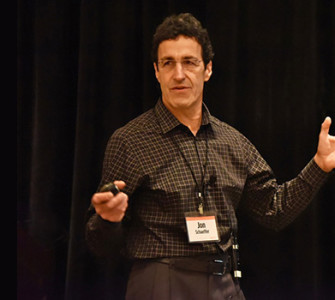Managing anticoccidials: ‘It’s how you use them that’s important’
Coccidiosis takes a toll of around $3 billion on global poultry production each year, making it one of the industry’s most economically significant diseases worldwide.1 Control and management are therefore critical to keeping flocks protected, but with limited tools available, a poultry health expert stresses that it’s essential to use them wisely.
“To control coccidiosis on your farm, your anticoccidials that are available in the market are only one part. It’s the big picture and how you use them that is important,” said Erik Uyttebroek, DVM, a poultry veterinarian at Zoetis.
Speaking to Poultry Health Today at the 2019 World Veterinary Poultry Association Congress in Bangkok, Uyttebroek said that good management and hygiene are essential. However, he stressed, these measures alone are not adequate to eliminate coccidial oocysts because they are highly resistant to disinfectants.
Anticoccidials are therefore another important tool, Uyttebroek said, but rotating between different anticoccidial categories — ionophores, synthetics and vaccines — is key to keeping them effective.
“It would be…easy just to make a choice [of anticoccidial] and say this is my program for the rest of my career. That doesn’t work; there will be resistance. At a certain moment your product will not work anymore,” he explained.
Rules of rotation
“So what we are proposing and what is very important is to switch from one product [class] to another on a regular basis, and that is what we call rotation.”
There are certain basic rules of anticoccidial rotation, Uyttebroek said. One of them is not to overuse products.
“For a synthetic product, we would say don’t use it more than once a year. For an ionophore, we would say don’t use it more than 6 months in a year,” he advised.
“A second rule is give your products enough rest. So for an ionophore, we would say don’t use it again for another 6 months after you’ve been using it. For a chemical, we say don’t use it again in the same [12-month period].”
Uyttebroek also advised producers to do a chemical cleanup once a year with a synthetic product. This reduces the shedding of oocysts, resulting in lower infection pressure in the poultry house. Vaccination is another option that can be used for a cycle to help protect flocks while restoring the sensitivity of oocysts to ionophores and synthetics, he added.
Anticoccidial sensitivity testing
When it comes to selecting anticoccidials, expected efficacy is the most important consideration, Uyttebroek stressed. To determine this, anticoccidial sensitivity tests (AST) may be run to compare the efficacy of different anticoccidials against field isolates of Eimeria, the parasites that cause coccidiosis.
Building on previous work from 2011, Uyttebroek and colleagues from Zoetis conducted AST to evaluate the efficacy of various anticoccidials in Europe. Between 2012 and 2017, they ran 32 AST on field isolates collected from different farms in 17 European countries.
At the National Institute for Agricultural Research in France, seven groups of birds were experimentally inoculated at 15 days of age with sporulated oocysts from a propagated field isolate. One of them was not treated and the remaining six groups each received a different anticoccidial. An additional group was neither inoculated nor treated and served as negative control. The birds were then evaluated and compared based on lesion scoring, bodyweight gain and feed conversion.
Statistical analysis of daily bodyweight gain (one of the most important performance criteria) revealed a notable difference between two different groups of anticoccidials. Overall, birds treated with the divalent ionophore lasalocid, with nicarbazin/narasin or with the synthetic products decoquinate or robenidine, performed better than those treated with the monovalent ionophores salinomycin, monensin, narasin or with the synthetic diclazuril.
Based on these results, the researchers concluded that the efficacy of monovalent ionophores against European isolates is impaired when compared with the divalent ionophore lasalocid.
“We have some theories why this could be,” Uyttebroek said. “And the major thing is that probably there’s an overuse of these monovalents, leading to more resistance in the field.”
Best practices for rotation
Rotation involves routinely and systematically changing from one anticoccidial product class to another with a different mode of action, ensuring effective Eimeria management over time. Anticoccidial rotation also is critical to avoiding resistance and securing the long-term viability of all products. An optimal rotation strategy is based on four best practices outlined below.
1 Kadykalo S, et al. The value of anticoccidials for sustainable global poultry production. Int J Antimicrob Ag. 2018;51(3):304-310.
Posted on December 23, 2019





















